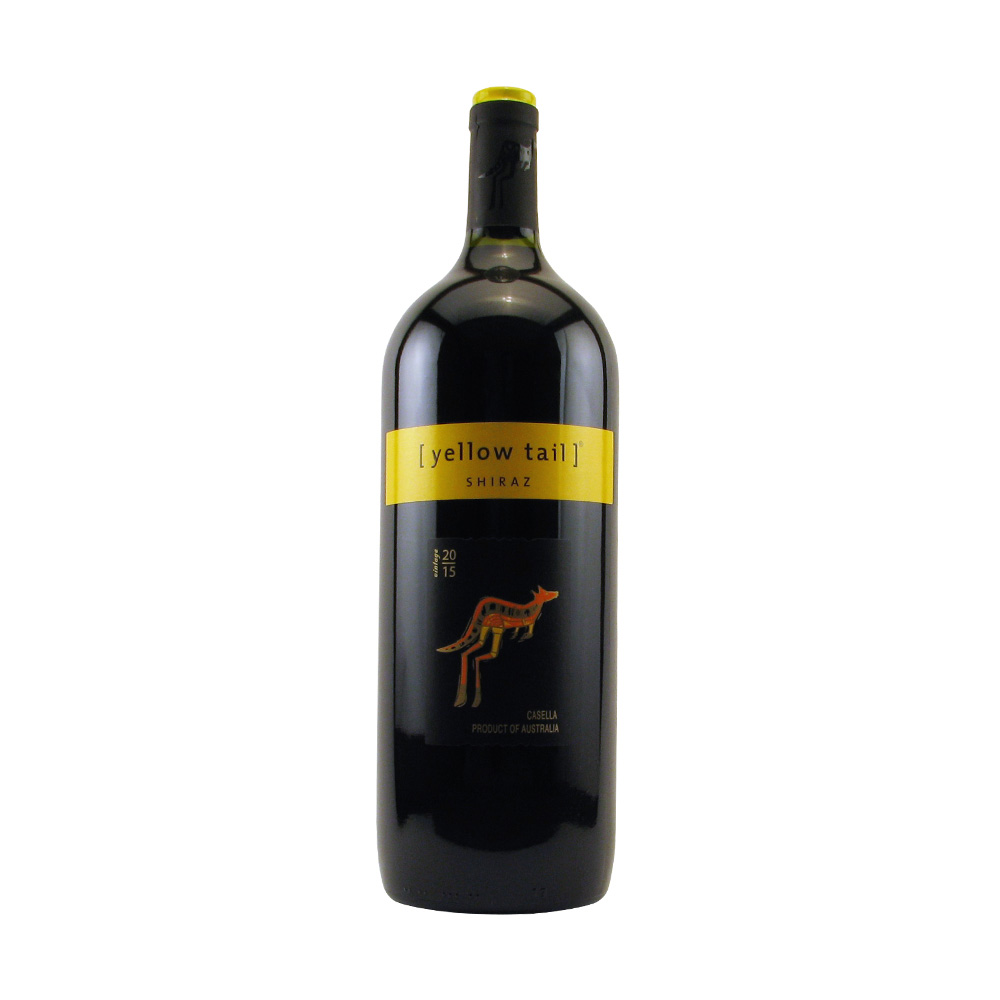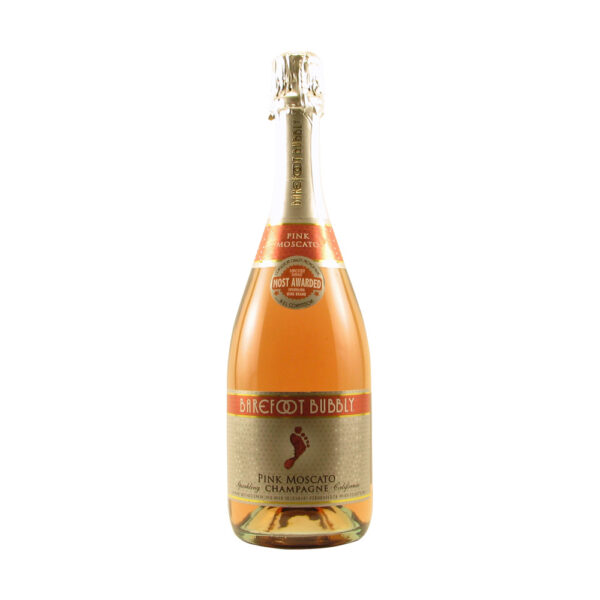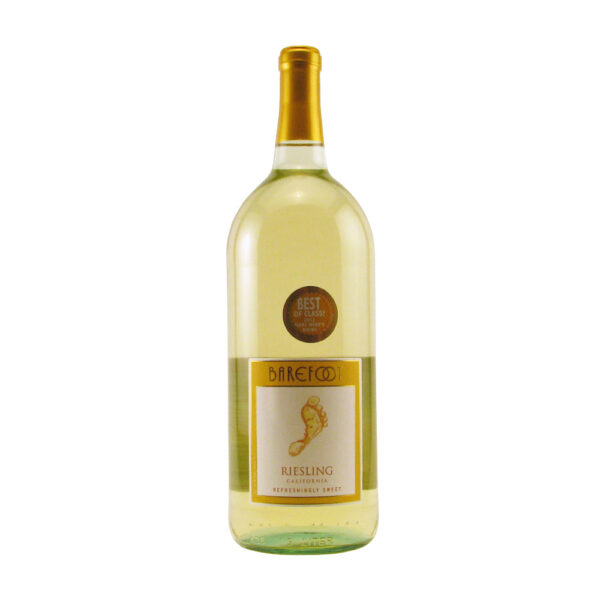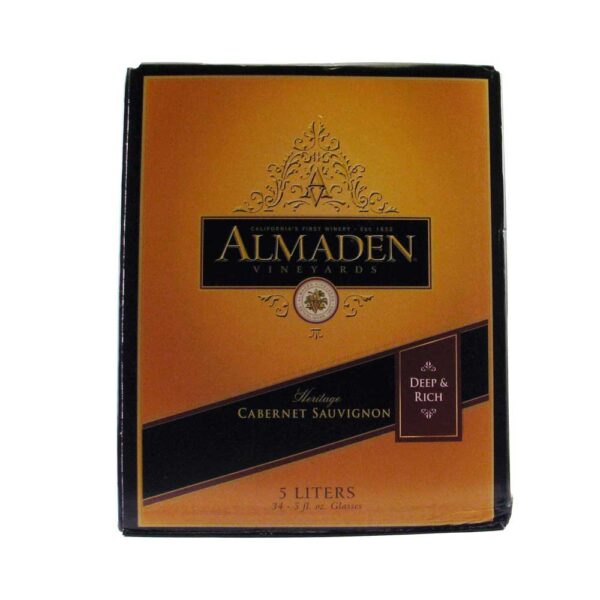Description
Yellow Tail Shiraz 1.5L
A very smooth, excellent medium-bodied, and slightly sweet red wine will consume your taste buds into thinking you’ve purchased an expensive bottle worth sipping slowly while enjoying company or reading a book! Even days after it’s been open, no sour wine for you!
The aromas of Yellow Tail Shiraz remind you of vanilla, cherry, strawberries, and spice. Your palate will experience a bold, vibrate, yet smooth will come to mind with earthy tones, lingering berry fruits and spice.
Yellow Tail is perfect to come home to after a long day!
Yellow Tail Shiraz Notes To Your Senses:
- TASTE: Vibrate, smooth, with lingering fruity flavors, bright acidity, some tannins, and earthy tone and a bit of spice
- AROMA: Light to medium berry-like; cherries, vanilla, strawberries, spice
- APPEARANCE: Rich Red
- ABV:13.5%
- PAIRING: With steak or in front of a roaring fire, cheeses, spicy dishes AND can even be used to cook the juiciest, most flavorful roast
Syrah (Shiraz):
Produces a deeply colored and concentrated, rich, red wines. It’s from a dark-skinned grape that is said to have started in France, but we’re unsure of the actual Origin. Shiraz is grown throughout the world and mostly used to produce red wine. The interesting thing about this type of grape is that the style and flavor profile depends on the type of climate of where the grapes are grown. In moderate climates, Syrah produces medium to full-bodied wines with medium-plus to high levels of tannins and notes of blackberry, black pepper, and mint.
While in a hot climate, it’s more full-bodied with softer tannin. The spice notes tend to be jammier fruit, licorice, and earthy leather. Secondary notes and aromas are usually associated with the winemaker’s practices. For instance, an oak barrel or yeast treatment. Secondary qualities develop as the wine ages too.
It can be used as the main grape like in North Rhone or used as a blending grape like in Southern Rhone. In Italy, it’s mostly grown in Tuscany and they use it as the main grape and a blender grape from Sicily. South Africa is predominately known as Shiraz wine. In Australia, it’s today’s most popular red grape!
Red Wine:
Bringing out the best aromas and flavors of red wine can be achieved through the correct storage of temperature, generally between 50 to 55 degrees. Of course, this is a general rule of thumb as it depends on the grapes used when producing wine. There are so many health benefits due to the tannin. Procyanidins are a type of condensed tannin that is found in green tea and dark chocolate. Speaking of health young red wines are better than old as they have more tannin. However, as red wine ages, they become lighter. Very old wines are translucent and pale.
Vitis vinifera originating from Eastern Europe makes up most of the common varieties of red wine. The aromas of red wine come from grapes only. Cherry, berry, jam, and herbs are all from fermented grapes and wine aging in oak barrels. Pretty simple for such a rich, complex, and tasteful wine!
Australia:
Australia’s wine comes from 65 different wine regions that are made of all different types of geography, topography, soils, and climate. The continent has the oldest soils on the planet with more than 100 different grape varieties, making it the top 5 wine exporting countries. While they are known for exporting, they are known for drinking it too! Australia is the third largest source of imported wine to Canada, Us, and Italy. In 1788, the first grapes were planted in Sydney. However, Australia does have some of the world’s oldest vines. Among the many vineyards, they have 25 that are colder than Bordeaux in France!
Cool-climate regions that are great for winemaking in Australia, are mostly due to altitude and maritime influences on its huge coastline. Tasmania, Margaret River, and Yarra Valley produce elegant wines and emphasize on restraint. Chardonnay and Shiraz are grown in all of Australia’s 65 wine regions. The Barossa Valley takes the title for the largest collection of old vines, many are Shiraz and Grenache that date all the way back to the 1840s!
In Western Australia, there is little wine compared to other areas, but the quality is high. So, take note of where your favorite wines are from and don’t be afraid to try something new, it could become your top 5 must-haves!
A little fact about Australian wine drinkers – they tend to drink white wines too cold and red too warm. By doing this, the coldness suppresses its fruit flavor and increases the oak character and tannin. If you drink it too warm, it exaggerates alcohol but softens tannin. So, drink at your preference, but be aware of how you drink it before your taste buds make the final decision!
Master Sommelier Little Known, Big Facts:
- The color of wine depends on the fermentation extracts using skin, like Red wine as compared to white wine, leaving the skin behind
- The oldest bottle of wine dates back to A.D. 325; it was found in Germany inside two Roman sarcophaguses
- The worst place to store wine is usually in the kitchen because it’s typically too warm, in refrigerators, their warmest setting can be too cold
- Richer heavier foods usually pair well with richer, heavier wines; light wines pair with lighter foods
- Generally, a vintage wine is a product of a single year’s harvest, not when the wine is bottled
- A “dumb” wine refers to the lack of odor while a “numb” wine has no odor and no potential of developing a pleasing odor in the feature
- If a server or sommelier hands you a cork, don’t smell it, look for the date or other information ( mold, cracking, or breaks)
- Tannin is a substance that tingles the gums when you indulge your palate with a sip of wine, it’s an excellent antioxidant
- Smell is by far the most important sense when it comes to drinking wine
- Wine was first developed in Mesopotamia, not France
- French wines are labeled following the soil on which they are produced, not according to the grape used
- When chilling wine, adding salt to ice will cool it down faster
Warnings:
You must be 21 or over to purchase this product
Instructions:
Serve chilled or at room temperature






Reviews
There are no reviews yet.